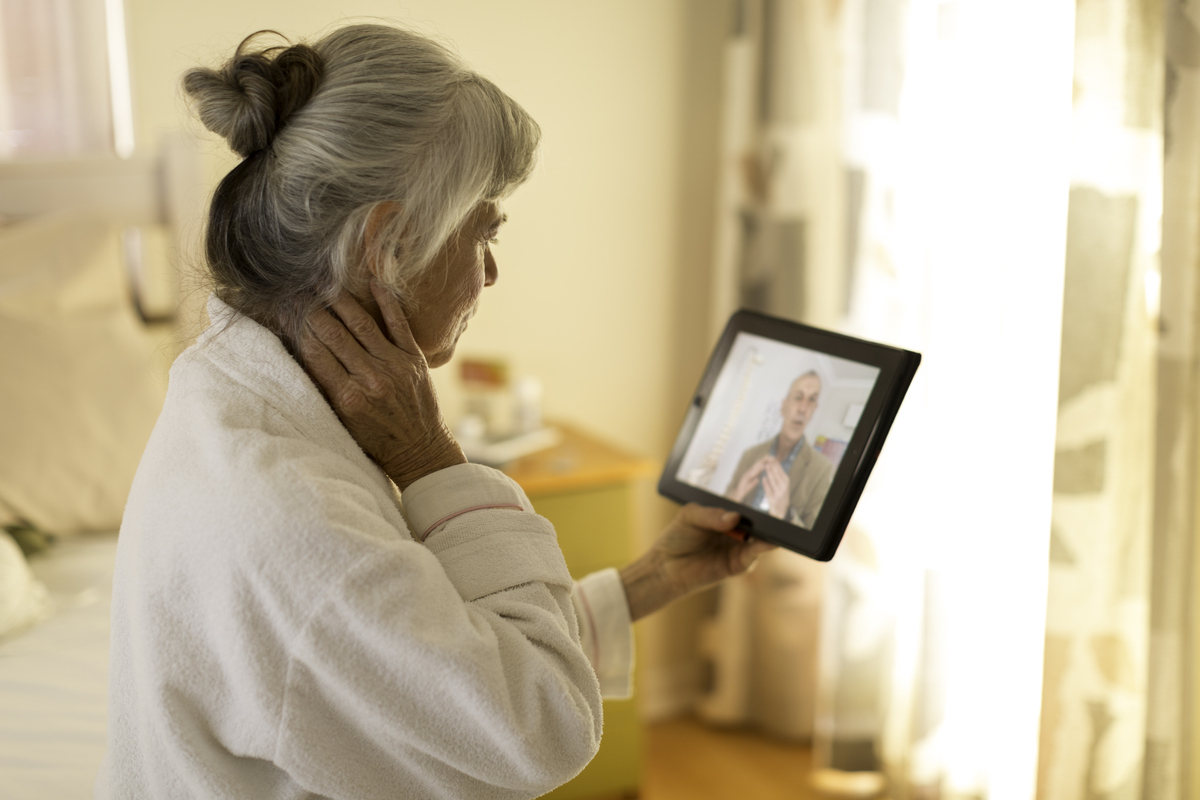Your Essential Guide to Telehealth Appointments
Even with the COVID-19 vaccine rollout, telehealth is likely to stick around. Here’s how to make the most of these virtual sessions.

When COVID-19 was first surging in early 2020, many healthcare providers turned to telehealth as a way to see patients while limiting their exposure to the virus. One physician survey found that few of these providers had telehealth services in place before that, which means the past year was a big learning curve for everyone.
Now that vaccines are rolling out and showing promise for getting us all back to in-person interactions, does that mean telehealth will go back to playing a minor role in healthcare? Many experts don’t think so.
“Now that we’ve seen how effective and convenient it can be, for patients as well as physicians, I think [telehealth] is actually going to keep growing in use,” says Scott Kaiser, M.D., geriatrician and director of geriatric cognitive health for Pacific Neuroscience Institute at Providence Saint John’s Health Center in California. “We all had to adapt, and now that we have, we can use these tools even better going forward.”
Whether you’ve used telehealth already or not, it may be helpful to think ahead about how to use this technology for your own care. Start here.
Step 1: Match Your Tech Comfort Level
There’s a range of platforms and apps that make telemedicine possible. Many physician practices and hospitals incorporate telehealth tools into existing patient portals—online websites where you can see all your info securely, such as lab results and appointment history.
There are also apps you can download to your smartphone if you want to shop around for doctors, including specialists. For example, an app called LiveHealth lets you “hire” doctors online who can answer questions through the app. It also has therapists and dietitians, as well as other professionals.
If the thought of scrolling around an app for health care makes you feel overwhelmed, don’t worry. That just means it’s probably not the best option for you. In that case, you’d likely be more comfortable with a simple patient portal.
Telehealth should feel like a resource, Dr. Kaiser says, not a source of stress. You can also do telephone appointments or FaceTime with your doctor if that’s an option.
Step 2: Do Your Prep Work
Although you’ll be at home for a telehealth appointment, it’s a good idea to prepare in the same way as you would for an in-person meeting, suggests Michelle Ogunwole, M.D., specialist in internal medicine and research fellow at The Johns Hopkins University School of Medicine.
That means jotting down all your medications and when you take them, side effects you’re experiencing, lifestyle changes you may have made—or have yet to make—questions you have about care, and your health goals. Have stats ready, like your weight and blood pressure if you have a device. And keep your pill bottles within reach just in case.
Also, be prepared to be “on screen” since that’s just as helpful for your doctor as the information you’ve put together.
“There will always be some circumstances where seeing you in person is the best approach so we can do a thorough exam, but there is value in a face-to-face conversation, even if it’s through a screen,” Dr. Ogunwole says.
Make sure your technology is good to go and working properly, including your camera and microphone, plus your Internet connection. Not sure? Do a trial run with a friend or family member in advance. It’s a great excuse to make a quick social connection.
Step 3: Think Beyond Your Primary Doc
Although your primary care physician will likely be your main point of contact for telehealth appointments, many specialists are using telehealth as well. For example, you can speak to specialists that range from cardiologists, endocrinologists, and allergists to nutritionists, physical therapists, social workers, and psychologists.
Subscribe to our newsletter
It's quick and easy. You could be one of the 13 million people who are eligible.
Already a member? Click to discover our 15,000+ participating locations.
Follow Us
Getting access to all of these professionals used to take running around to different offices and navigating appointment schedules, but telehealth makes it much easier to tap into their insights quickly from home. And you won’t be compromising on results. A 2020 study looking at different mental health services found therapy delivered electronically is just as effective as face-to-face sessions.
“There is definitely a higher level of comfort that comes with being able to stay in a familiar environment like your home,” says Jennifer Gentile, PsyD, who treats some patients virtually using a telehealth app. “You also take away barriers that might seem minor but are actually very important, like scheduling flexibility and transportation issues.”
When setting up appointments with specialists, ask the scheduler if telehealth is an option and what the procedure would be. Sometimes it may be as simple as a Zoom or other video call, but for some professionals, they need to use a more secure application due to health regulations.
Step 4: Ask for Help
If you’re unfamiliar with technologies that can be used for telehealth, ask your doctor’s office for assistance, Dr. Ogunwole suggests. Many people have had to get used to switching over to telehealth appointments over the past year, so clinics and hospitals are now used to helping with this kind of tech support.
Take advantage of telehealth to make appointments more effective now, and you’ll be prepped for a more digital future.
Take Your Favorite SilverSneakers Classes Online!
SilverSneakers members can access live fitness classes and wellness workshops through SilverSneakers LIVE. See the latest schedule and RSVP for classes here.
Not a member? If you have a Medicare Plan, it may include SilverSneakers—at no additional cost. Check your eligibility instantly here.





